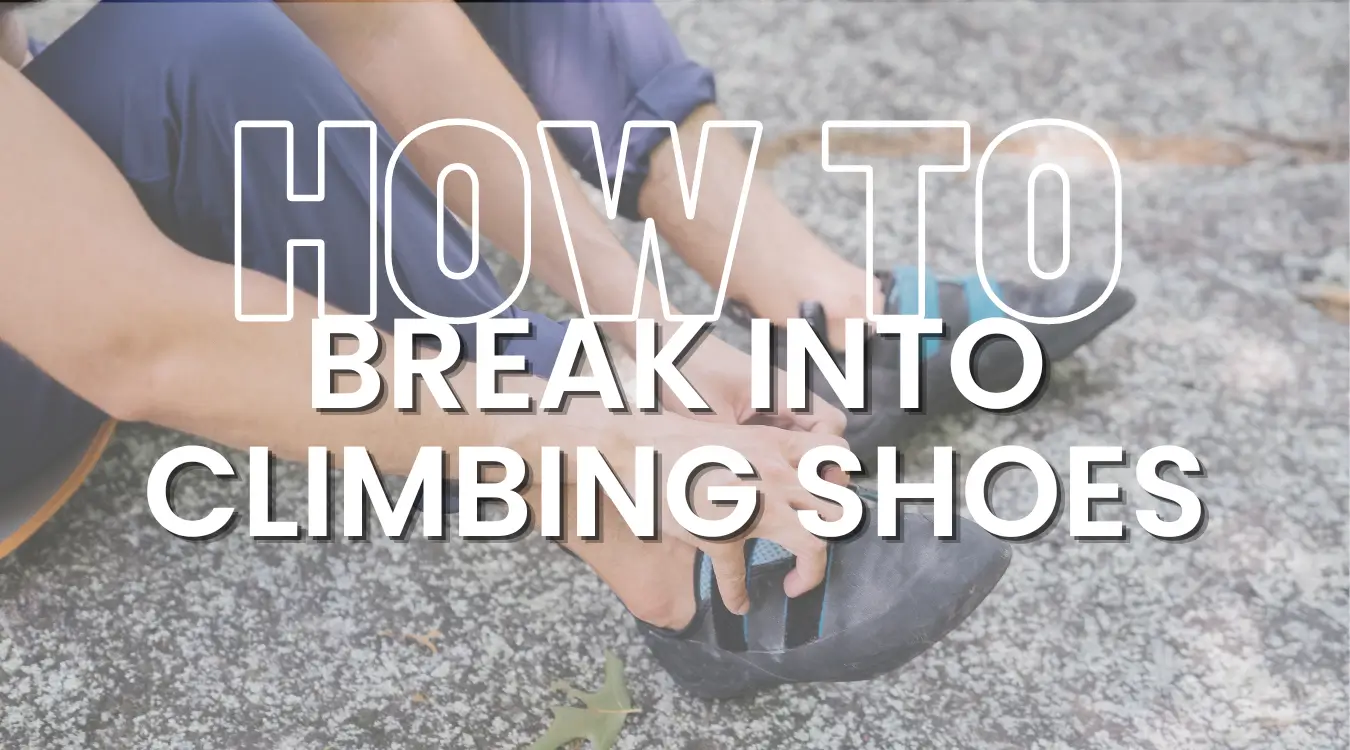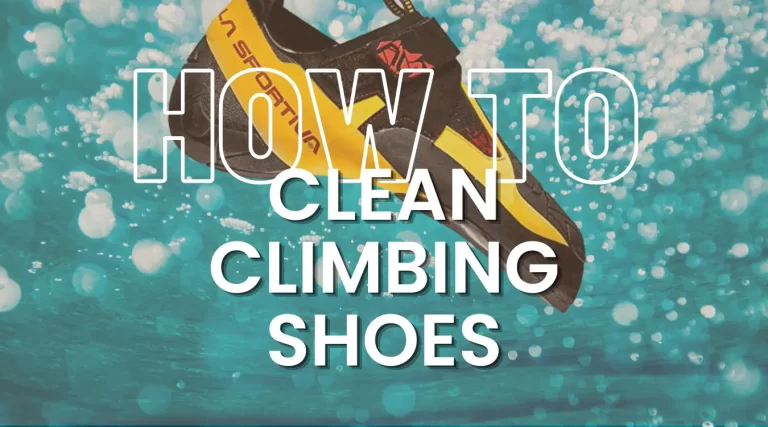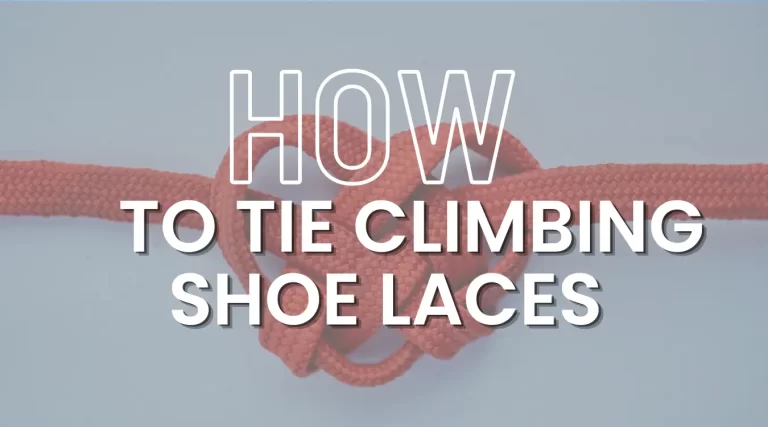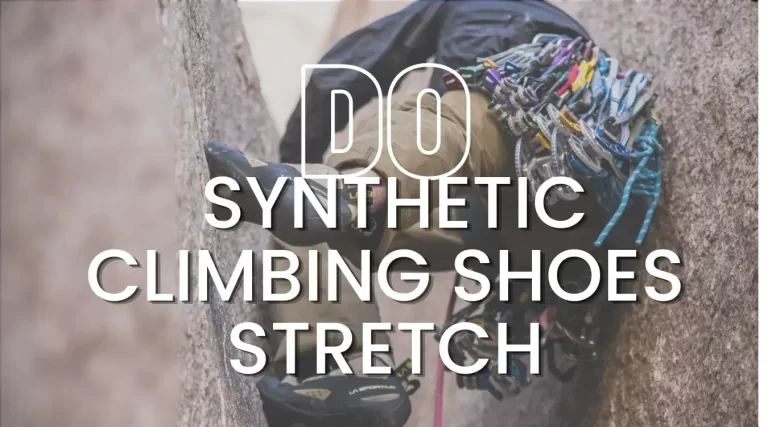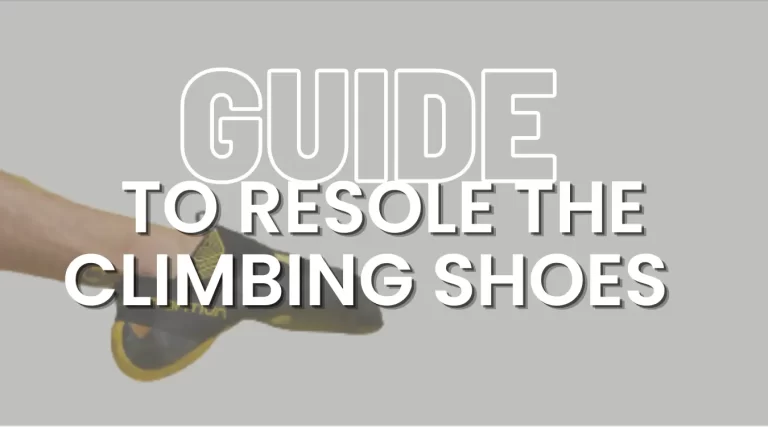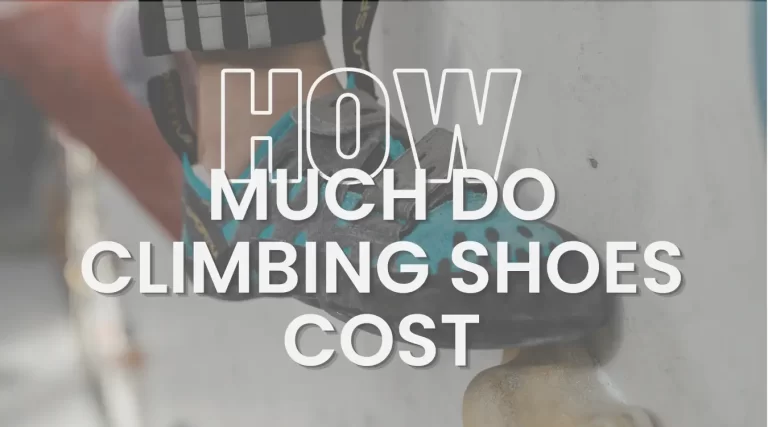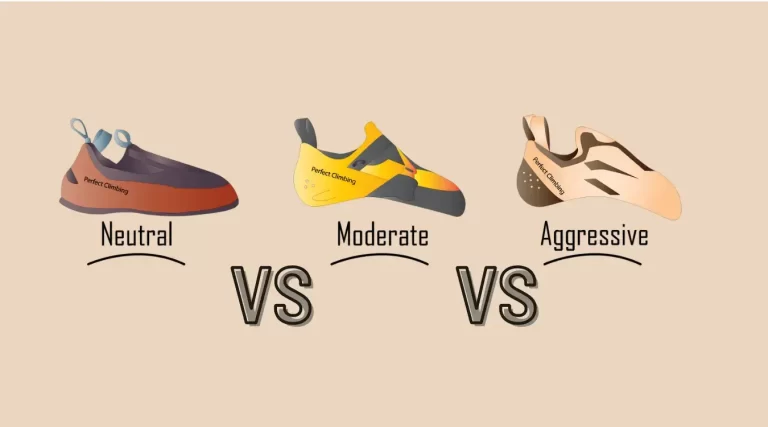How To Break Into Climbing Shoes
You just bought your personal climbing shoe pairs, but you need your boots to fit. Should you go with a half-insert or a full-size insert? Better yet, should you just size up? Many climbers are asked this question: “How to break into climbing shoes?” The thought is: “Well, we’ve been climbing for 20 years, so we should have pretty good toes.” Read on to learn how to break in shoes.
Breaking in climbing shoes is an integral part of the process. This article covers the best way to break in your shoes and a few things you should remember for best fit and sizing.
Climbing shoe pairs typically last from 300 to 500 climbing hours, whatever you decide to use them for. Like any other shoes, climbing shoes must be broken in before use. So how does climbing shoes get broken in? Find out in this definitive guide.
How To Break In Climbing Shoes
We will share our tips to understand how you can break your climbing shoes. But first of all, you must check your shoes entirely, so let’s check your shoes now.
Check your shoes thoroughly.
Many things can vary regarding a climbing shoes. This list includes material, like the shoes can be made out of leather or synthetic material, construction, like whether it is a lace-up or a velcro closure shoes design, and style, like whether the shoes are downturn or flat, and toe box profile.
Leather upper shoes are more forgiving and stretch than synthetic shoes during the break-in period. Leather shoe stretch is on a larger scale as compared to synthetic ones. After an excellent stretching period, synthetic shoes may feel tighter than a leather shoe. Another good thing about shoes with leather uppers is they will last longer than synthetic climbing shoes. This is a plus point of leather uppers shoes.
Select the Right size For your feet
Comfort and fit are the two most important factors when deciding on a pair of walking shoes. So if you suffer from poor circulation, you may want to have your shoes made with extra space and padding. On the other hand, if you’re going out for a long periods of hike, you might consider getting a pair of shoes with thicker rubber sole.
The right shoe you wear to climb on matter just as much, if not more, as the climbing technique you employ. The best way to do this is to find a shoe that fits your foot size, and test it on a stationary wall. Try on mountaineering boots, climbing shoes, and other types of shoes.
A climbing shoe should fit comfortably on your feet and be easy to step into. Many neutral shoes do so, as do some aggressive shoes. The break-in process should last for a day or less, and you should be able to climb with relative ease.
When shoes are new, they stretch easily into a comfortable fit. However, shoes lose that stretch as feet expand and contract throughout the day. When feet swell, shoes may become too large, and climbers with large feet may be forced to wear shoes that are too small. It can cause feet to slip inside the shoes, thus leading to painful blisters.
Use plastic bag in your Climbing shoes.
Climbing shoes, when new, can be damn near impossible to get on your feet. This common problem can be easily dealt with by placing new shoes of these stubborn shoes in a plastic bag.
The product, which comes in a plastic bag, is designed to be easily torn off and wrapped around your heel. It keeps the shoe from sticking to your foot and makes it much easier to slip your foot into even the tightest of shoes. Thus, we strongly recommend keeping your shoes in a plastic bag or a plastic wrap.
You can also use two zip lock bags to make an air-tight condition. But the plastic bag method / plastic wrap method works and is more easy and accessible.
Wearing your footwear internally is not an unusual exercise for breaking in new trekking boots or trekking shoes. However, in contrast to shoes, I don’t advise taking walks around an excessive amount of your hiking footwear. Climbing footwear isn’t constructed for taking walks in, and immoderate taking walks can damage that lovely downturned camber.
I incredibly propose this ‘pre-destroy in’ ritual due to the fact it’s a tremendous possibility to make sure you’re satisfied with the scale and form of the shoe earlier than passing the factor of no return (I suggest that literally, Jeff Bezos won’t come up with a money back in case you ship returned a couple of hiking footwear which has been dragged across the gym. )
learn How to tie Climbing Shoes
Climb with your new shoes
The satisfactory manner to interrupt in mountain climbing footwear is via way of mountain climbing in them. Period. There’s no mystery sauce here.
When you’re equipped to begin mountain climbing for your new kicks, start by leaping on a few smooth routes with some massive jugs, wallets, and smears to begin manipulating the footwear.
These massive holds flex the forefoot appreciably greater than small edges and crimps, wherein the shoe is designed to live greater rigid. Your footwear will probably experience barely uncomfortable for the primary few sessions, so ensure to take them off often among climbs. You may discover it snugger to put on socks, at least for the first time.
Repeat
Rinse and repeat step 3 for 3 – five mountain climbing periods, and you’ll quickly have a couple of flawlessly becoming mountain climbing shoes. After the introductory session, you’ll be capable to begin shifting far from the vast as well as small hold and onto the small edges.
You can be topping out the pesky tasks to your new kicks in no time.
Wine/dine With Your Climbing Shoes
The maximum green manner to interrupt your footwear while off the wall is to put them on. Whether that is at the same time as you watch television, visit the stores or prepare dinner. A romantic meal sporting your footwear will stretch them and loosen up the substances of the shoe.
This is probably painful to start with, so try this in stages, step by step, growing the quantity of time you maintain the shoe on.
Warm Your Climbing Shoes
Even rigid? So, the exceptional way to hurry this growth alongside is to heat your shoes. Heat is the number one catalyst for shoe stretching, forcing the fabric at the shoe to make bigger and mildew to the form of your foot. Warming the shoe may be carried out by using more than one strategy with the shoe on or off your foot.
Stretch your climb shoe with ice
Stretching your shoes with ice is one of the slower methods. The process is as follows.
Empty the footwear of any paper stuffing, tags, stickers, etc., supplied withinside the packaging.
Pour enough water inside the Zip Lock bag so that they’re near in length for your feet. Make certain they’re closed first-rate and tight.
Slip a water bag into every shoe, then tighten and tie their laces with slight tension. Leave them in a freezer overnight. If you are using veclro shoes, use the same method with them as well, and let the shoes cool.
The subsequent morning, pull them out for thawing, and let the shoes dry fully. Do not dispose of the luggage till the water inner is now no longer frozen.
how to wear climbing shoes?
The Natural Break-in Process
A climbing shoe will naturally break in with use over time. This process can take anywhere from a few sessions to a few weeks, depending on the shoe’s material and the frequency of use.
Accelerated Techniques
If you prefer to speed up the break-in process, consider these methods:
Wet Break-in
Wear your climbing shoes in a hot water bath for 15-20 minutes, then walk around in them until the damp shoes are dry. This hot water method helps soften the materials and the shoes mold themselves to your feet. Use caution when using hot water.
Heat Break-in Using A Hair Dryer
Instead of using hot water, you can use a hair dryer to warm the shoes’ materials before putting them on. Wear them for 15-20 minutes, flexing your feet and walking around to help the shoes conform to your feet.
Stretching with Objects
Insert socks, newspaper, or shoe trees into your climbing shoes to gently stretch them. Leave the objects in overnight, and try on the shoes the next day to check for the desired fit.
How To make new climbing shoes comfortable?
To make new shoes comfortable, follow these steps:
- Choose the right size and fit: When selecting your climbing shoes, make sure they fit snugly without causing pain. Your toes should touch the front of the shoe without being cramped, and your heel should be secure without slipping.
- Break them in: Allow for a natural break-in period by wearing your new shoes during climbing sessions. This process can take anywhere from a few days to a few weeks, depending on the shoe’s materials and how often you climb.
- Speed up the break-in process (if needed): If you want to accelerate the break-in process, consider using techniques such as the wet break-in method (soaking shoes in warm water and wearing them until they dry), heat break-in method (using a hairdryer to warm up the shoes before wearing them), or stretching with objects (inserting socks, newspaper, or shoe trees to gently stretch the shoes).
- Consider wearing thin socks: If you prefer extra cushioning and protection, try wearing thin, moisture-wicking socks with your climbing shoes. This can help prevent blisters and improve overall comfort.
- Maintain proper shoe care: Keep your climbing shoes clean and well-maintained to ensure optimal comfort and performance. Use a soft brush to remove dirt and debris, and store them in a cool, dry place away from direct sunlight.
FAQ’s
How to stretch Climbing shoes with a shower?
Yes, it is true. Many climbers do this to stretch out their rock climbing shoes. This method is extremely effective; however, it can be dangerous. If the climbing shoes are not laced properly, it could lead to injury.
Walking around while soaking wet in the shoes does not have the same appeal as walking in them. After about an hour, the shoes are cool and dry, but your feet are still warm. So, after an hour, it is advisable to take them home for a longer steep, then wear them around the house for the rest of the day.
Some shoes can be left outside to dry, but most climbing shoes will need to be replaced after drying. It’s important to have an accurate idea of how long a pair of shoes will dry, as this can affect how well they perform. After shoes are completely dry, it is important to stuff them with absorbent material before storing them. Newspaper is great for this. Many shoes will need to be restuffed after drying.
How to stretch climbing shoes in the freezer?
Bear with us in this one. However, it could be some other quite powerful approach. The best option is to get sealable sandwich baggage and fill it with water until it resembles your feet’ scale. Put the water-stuffed baggage, one into every mountain climbing shoe, and attach loosely. Place the footwear into your freezer and depart them overnight. The water within the baggage will extend at some point in the freezing process, stretching your footwear. Allow at least 10-12 hours before taking the footwear out and let them thaw completely.
This approach is less ‘powerful’ than the bathe approach, so it can take some go earlier than the preferred healthy is achieved. The gain of this approach is that it could make for greater particular healthy.
How long does it take to break in your shoes?
Climbing shoes usually take around 5-10 hours of climbing time before taking on a more comfortable fit. The materials used for these shoes can be a significant factor. Nylon and Polyester are common materials that climbers use. These materials are usually known for holding their shape well.
Synthetic shoes do not mold to perfect fit your feet and, because of this, have a short break-in period. They usually require a bit of breaking in and a bit of time before your feet can mold to the shoe. They may take longer to break in than their leather counterparts, making their lower cost attractive.
can you walk in climbing shoes?
Yes, you can walk in climbing shoes, but it is generally not recommended for extended periods or on rough terrain. Climbing shoes are specifically designed for rock climbing, with a focus on grip, precision, and support. As a result, they may not provide the same level of comfort or durability as regular walking or hiking shoes.
Walking in climbing shoes for short distances, such as moving between climbing routes at the crag or gym, is usually fine. However, for longer walks or hikes, it’s better to switch to appropriate footwear to ensure comfort and avoid unnecessary wear and tear on your rock climbing shoes. Long walks can also unnecessarily stretch climbing shoes, making them unfit.
Should I wear socks with Climbing Shoes?
Whether to wear socks with climbing shoes is a matter of personal preference, and there are pros and cons to both choices.
Pros of wearing socks with climbing shoes:
- Comfort: Socks can provide extra cushioning and prevent hot spots or blisters, especially when breaking in a new pair of shoes.
- Hygiene: Wearing socks can help absorb sweat, reduce odor, and keep your shoes cleaner.
- Fit: If your shoes are slightly too big, wearing thin socks can help improve the fit.
Cons of wearing socks with climbing shoes:
- Sensitivity: Socks can reduce the sensitivity and direct contact between your feet and the climbing surface, which may affect your grip and precision.
- Fit: Socks can alter the fit of your shoes, potentially making them feel looser or bulkier.
- Temperature: Wearing socks might make your feet feel too warm, especially in hot weather or during intense climbing sessions.
Ultimately, the decision to wear socks with climbing shoes comes down to personal comfort and preference. Some climbers prefer the feel of bare feet in their shoes, while others find that thin socks provide additional comfort and protection. If you choose to wear socks, opt for thin, moisture-wicking materials to minimize any potential downsides.
Conclusion
The shoes fit properly during the first session, but over time and with repeated use, they wear down, stretch and lose their precision edge, heel hooking, and smearing abilities over time. The shoe’s comfort factor can be attractive, but the overall fit is less precise. Beware of buying performance shoes that feel too comfortable from new.
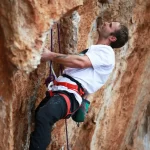
Leah Leonard
Leah Leonard is a renowned author and seasoned climber, best known for her captivating book, “Perfect Climbing.” Her experiences scaling the world’s most formidable peaks have not only shaped her adventurous spirit but also lend a unique authenticity to her compelling narratives.
